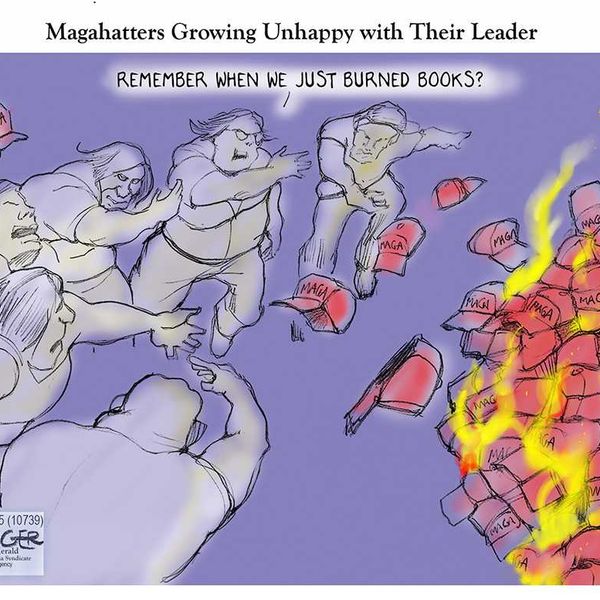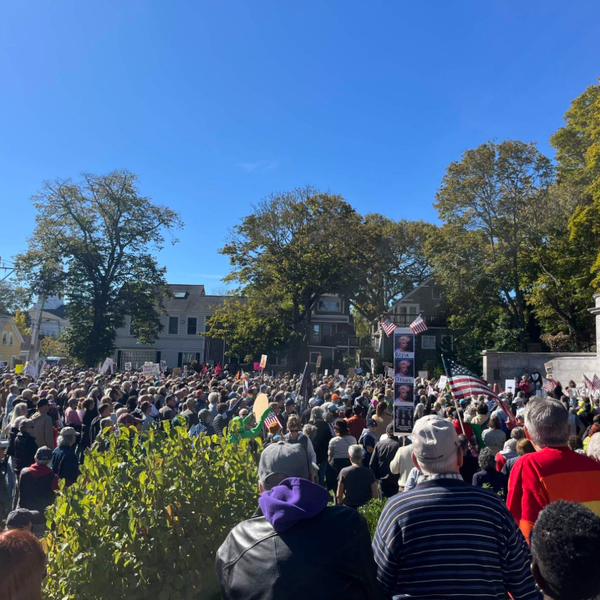Ominous Economic Indicators In The 'Fast-Food Consumption Index'

For the last several years I have relied on real (inflation-adjusted) spending at fast food restaurants as a useful gage of consumer sentiment. I began this during the pandemic recovery when the media were constantly telling us that people were struggling to make ends meet.
While this is always true in a country with a weak social safety net and extreme income inequality, the question any serious person asks is whether it’s getting worse or better. I kept pointing to the data showing that, at least for those at the bottom, it seemed to be getting better.
Wages in the lowest paying sector, hotels and restaurants, were substantially outpacing inflation. Also, analysis of wage data in the Current Population Survey showed that workers in the bottom decile of the wage distribution had the fastest real wage growth in half a century, with their wages outpacing inflation by 15 percent between 2019 and 2024.
To be clear, no one in their right mind would say that workers at the bottom of the wage distribution had it good. An inflation-adjusted $17.25 an hour in 2024 might be a lot better than $15.00 in 2019, but that is not the sort of pay on which someone could support themselves very well, and certainly not raise kids. Nonetheless, real wages were at least moving in the right direction, which they had not for much of the past five decades.
Anyhow, the pundits insisted that they didn’t care what the data showed, people didn’t feel they were doing well. It is hard to get into people’s heads. I know reporters are apparently experts at telling us what people really think, but most of us are not capable of mind reading.
We can look to what people say, but in a country of 330 million people, we could always find someone saying almost anything. It’s true that we saw lots of people quoted in news accounts telling us things were awful, but that was the decision of people writing the news to find people saying things were awful.
There is polling data, but that also ends up being ambiguous. People tended to answer questions about the economy in general very negatively, but they usually described their own situation as being relatively positive. Most people don’t have any direct knowledge of the economy as a whole. They get tidbits from the media, on social media, or their friends and co-workers. For this reason, their personal assessments of the economy have to be taken with a grain of salt.
There is an old saying that economists look at what people do, not what they say. There is some wisdom in this approach. People may say they think the economy is good or bad because they have been told this is the case, but their spending presumably reflects their own perception of their financial situation. For this reason, if we can measure what people are spending, we can get an idea of how they view their finances.
However, this does raise the problem of distribution. A grossly disproportionate share of spending is done by the top quintile of the income distribution. If aggregate consumption rises it could be because these people are seeing big stock gains, not because typical workers are doing better. In fact, recent research shows the richest 10 percent of households account for nearly half of all consumption.
This is my reason for turning to the fast-food consumption index. While rich people also go to McDonalds and KFC, it is unlikely they increase their visits much when the stock market rises. In fact, having more money may lead them to eat at more expensive sit-down restaurants instead of fast-food restaurants.
This means that changes in fast-food consumption are likely to primarily reflect changes in spending by lower and middle-income people, not the rich. With the revised consumption data released last week, we can see an interesting and not very good pattern in fast-food spending.
In 2021, 2022, and 2023, real fast-food spending was growing at an average annual rate of 5.4 percent, considerably faster than the 2.9 percent growth rate in the decade prior to the pandemic. But spending largely stagnated in 2024. Real spending in December of 2024 was actually 1.0 percent less than it had been in December of 2023. That stagnation has continued into 2025. Spending in August was less than 0.1 percent higher than it had been in December of 2023. This suggests that most workers do not feel they are doing well these days.
That fits the story with real wages in the hotel and restaurant industry. Real hourly wages for non-supervisory workers are less than 0.8 percent above their level in December of 2023. On the positive side, at least real wages are not falling, as was often the case in prior decades, but a gain of 0.8 percent in almost two years is not much to boast about.
With the revised data, there is more of a case that the labor market was weakening in 2024. It looks like it is continuing to weaken in 2025. Perhaps something on the horizon will turn that story around, but there look to be many more potential negatives than positives for the near future.
Dean Baker is a senior economist at the Center for Economic and Policy Research and the author of the 2016 book Rigged: How Globalization and the Rules of the Modern Economy Were Structured to Make the Rich Richer. Please consider subscribing to his Substack.
Reprinted with permission from Dean Baker.
- Mad Margie Is Sorry She Voted For Trump's Budget Bill ›
- 'Complete Fraud' RFK Jr. Caught Chomping McDonald's Burger With Trump ›
- Trump's Weak Economy Grew 1.5 Percent In First Half Of 2025 ›
- Minimum Wages and Employment: A Case Study of the Fast-Food ... ›
- Fast Food Failure: How CEO-to-Worker Pay Disparity Undermines ... ›
- How fast food reveals secrets of the economy ›
- What the Fast Food Industry Is Telling Us About the Economy ... ›
- Fast-food owners, squeezed customers test limit of value meal ... ›
- 75+ Fast Food Consumption Statistics — Drive Research ›








